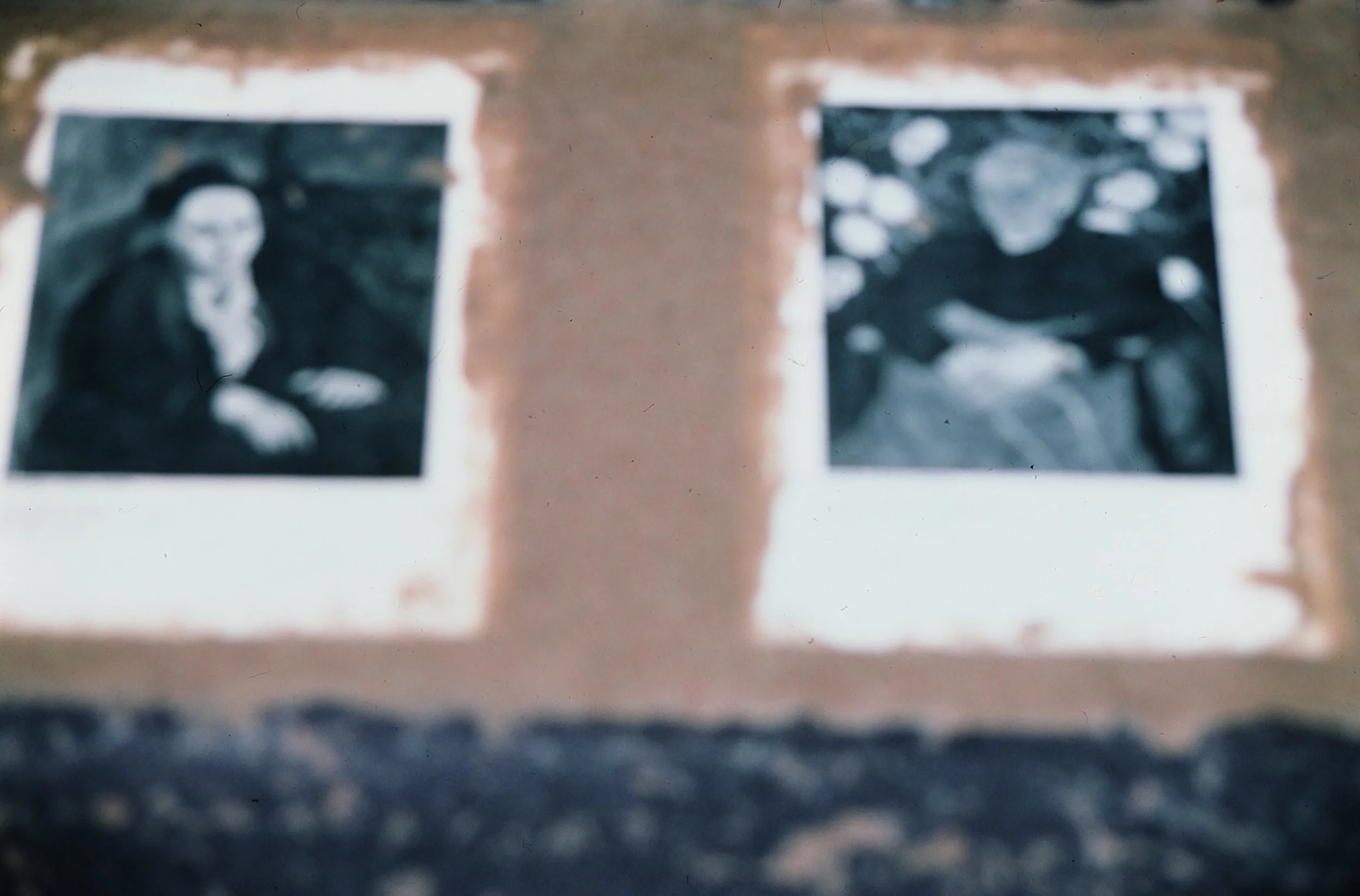The Weight of Art History, 1987-1988
The Weight of Art History series was conceptualized during a time of transition in Lois Polansky’s work. In an effort to develop new goals, she started to study and read her art books; seeking inspiration, and trying to determine where her ideas and skills might fit into the continuum. Since “the book” had always been a point of departure for her it was logical to turn to the collection that weighed down the book shelves in her studio. These books, with their uneven quality of reproductions had often nourished her and became the raw material for her own inventions. While Polansky was developing ideas for the series she happened by chance to find her undergraduate art history survey course notes; those yellowing prints of each famous work that she had to memorize for a final exam an eternity ago, those 5 x 7 blurs that were the result of a dehydration process that homogenized all of the rich artistic variations into uniform little postage stamps. With her passion for series and sequential order, Polansky proceeded to make order out of disorder by organizing the prints into a rough time frame and embedding each one in a sheet of handmade paper. Hundreds of pages later, she had lifted the heavy weight of her art history notes to a new level. In the title of the series Polansky indulged in punning and word play, the WAIT/WEIGHT of art history.
“I felt as if the ideas had become air born and sprouted wings; because as I worked, I thought about the past and resurrected many forgotten and buried ideas. In the process of producing these books I learned that the WEIGHT of art history is a WAIT to be reborn; a period of maturation/gestation, when an embryo feeds upon the mother source for development.” -Lois Polansky about her Weight of Art History series
























Since this project took almost a year Polansky broke the notes into twelve periods or twelve months and has a separate volume for each month. She used two images per folio and sewed the individual folios into twelve accordion style books. Each book is 120 inches long [if the folios are extended] and contains thirty-six images. The signatures composing each book are bound into a cast paper relief cover which resembles a heavy old carved picture frame. In the center of each of the twelve cover/frames she painted a small image, a fragment of a familiar painting from the time frame represented within the book. She selected the works that had the greatest impact upon her over the years. By focusing on small segments of her most beloved pictures [reducing and cropping as necessary], she was able to relate the small image/fragments to the cast paper frames proportionally as well as aesthetically. For example, on the cover of the volume that included faded prints of some of Zurbaran’s work, she painted a very small section of ST. SERAPION’S tortured visage, neck, and cowl. She dissected the little forms from a small inverted reproduction and focused on the photo’s microscopic pores. By forcing herself to experience the light and dark transitions in minute detail, she began to get a sense of the artist’s approach to building an image.
“I kept the books as journals or diaries of ideas, by writing over the photo-images with comments and sketches; I made an amalgam of the past with present and future ideas. the poor quality of the prints gave me enough distance from the Olympian Gods of Art not to be intimidated, but free to associate to the ideas and styles of western art across the boundaries of time. Each book has a “weight” attached to it that is a feather cast in paper. One volume [Vol VIII, Caravaggio] deals with the Renaissance when great anatomical and botanical revelations blossomed. In that book the pages are bound in a fantasy frame of cast paper bones and plant forms. I’m trying to poke a bony finger at the popular idea of hanging photo-reproductions in auspicious frames [to relate to decor or to humble us on gallery walls]. I also, framed the little reduced images with thick gold lines which satirizes the idealization of “simulacrums” in our society.
When these books are opened and expanded on the walls its possible to observe stylistic changes from one century to another just from the variation in organization of pictorial elements. In stepping back from this quilt of images I got a sense of an overall pattern emerging. the extension of this concept is that there are an infinite number of possibilities and combinations available to the artist. The flexibility of history as a creative tool gave me a range of options to cross blend style, form, di-mension, and medium in any formal order.”
--Lois Polansky about her Weight of Art History series